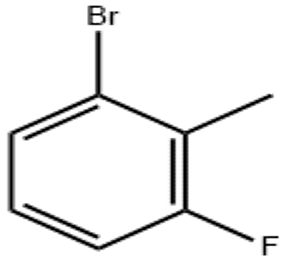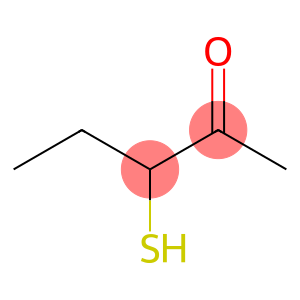Titanium(IV) oxide CAS 13463-67-7
| Hazard Symbols | Xn – Harmful |
| Risk Codes | R20/21/22 – Harmful by inhalation, in contact with skin and if swallowed. R36/37/38 – Irritating to eyes, respiratory system and skin. |
| Safety Description | S26 – In case of contact with eyes, rinse immediately with plenty of water and seek medical advice. S36 – Wear suitable protective clothing. |
| UN IDs | N/A |
| RTECS | XR2275000 |
| TSCA | Yes |
| HS Code | 28230000 |
Titanium(IV) oxide CAS 13463-67-7 Introduction
quality
White amorphous powder. There are three variants of titanium dioxide that exist in nature: rutile is a tetragonal crystal; Anatase is a tetragonal crystal; Plate perovskite is an orthorhombic crystal. Yellow in slightly hot and brown in strong heat. Insoluble in water, hydrochloric acid or nitric acid or dilute sulfuric acid and organic solvents, soluble in concentrated sulfuric acid, hydrofluoric acid, slightly soluble in alkali and hot nitric acid. It can be boiled for a long time to dissolve in concentrated sulfuric acid and hydrofluoric acid. It reacts with molten sodium hydroxide to form titanate. At high temperatures, it can be reduced to low-valent titanium by hydrogen, carbon, metal sodium, etc., and react with carbon disulfide to form titanium disulfide. The refractive index of titanium dioxide is the largest in white pigments, and the rutile type is 8. 70, 2.55 for anatase type. Since both anatase and plate titanium dioxide transform into rutile at high temperatures, the melting and boiling points of plate titanium and anatase are virtually non-existent. Only rutile titanium dioxide has a melting point and a boiling point, the melting point of rutile titanium dioxide is 1850 °C, the melting point in air is (1830 earth 15) °C, and the melting point in oxygen enrichment is 1879 °C, and the melting point is related to the purity of titanium dioxide. The boiling point of rutile titanium dioxide is (3200 soil 300) K, and titanium dioxide is slightly volatile at this high temperature.
Method
Industrial titanium oxide sulfate is dissolved in water and filtered. Ammonia was added to precipitate a gauntlet-like precipitate, and then filtered. Then it is dissolved with oxalic acid solution, and then precipitated and filtered with ammonia. The obtained precipitate is dried at 170 °C and then roasted at 540 °C to obtain pure titanium dioxide.
Most of them are open-pit mining. Titanium primary ore beneficiation can be divided into three stages: pre-separation (commonly used magnetic separation and gravity separation method), iron separation (magnetic separation method), and titanium separation (gravity separation, magnetic separation, electric separation and flotation method). The beneficiation of titanium zirconium placers (mainly coastal placers, followed by inland placers) can be divided into two stages: rough separation and selection. In 1995, the Zhengzhou Comprehensive Utilization Research Institute of the Ministry of Geology and Mineral Resources adopted the process of magnetic separation, gravity separation and acid leaching to beneficiate the extra-large rutile mine in Xixia, Henan Province, which has passed trial production, and all indicators are at the leading level in China.
use
It is used as a spectral analysis reagent, a preparation of high-purity titanium salts, pigments, polyethylene colorants, and abrasives. It is also used in the pharmaceutical industry, capacitive dielectric, high-temperature resistant alloys, and high-temperature resistant titanium sponge manufacturing.
It is used to make titanium dioxide, titanium sponge, titanium alloy, artificial rutile, titanium tetrachloride, titanium sulfate, potassium fluorotitanate, aluminum titanium chloride, etc. Titanium dioxide can be used to make high-grade white paint, white rubber, synthetic fibers, coatings, welding electrodes and rayon light-reducing agents, plastics and high-grade paper fillers, and is also used in telecommunications equipment, metallurgy, printing, printing and dyeing, enamel and other departments. Rutile is also the main mineral raw material for refining titanium. Titanium and its alloys have excellent properties such as high strength, low density, corrosion resistance, high temperature resistance, low temperature resistance, non-toxicity, etc., and have special functions such as gas absorption and superconductivity, so they are widely used in aviation, chemical industry, light industry, navigation, medical, national defense and marine resources development and other fields. More than 90% of the world’s titanium minerals are used to produce titanium dioxide white pigments, and this product is more and more widely used in paint, rubber, plastics, paper and other industries.
security
Store in a cool, ventilated warehouse. The package is sealed. It cannot be stored and mixed with acids.
Rutile mineral products shall not be mixed with foreign sundries in the process of packaging, storage and transportation. The packaging bag material is required to be corrosion-resistant and not easy to break. Double-layer bag packaging, the inner and outer layers should be matched, the inner layer is a plastic bag or cloth bag (kraft paper can also be used), and the outer layer is a woven bag. The net weight of each package is 25kg or 50kg. When packing, the mouth of the bag should be tightly sealed, and the logo on the bag should be firm, and the handwriting should be clear and not fade. Each batch of mineral products shall be accompanied by a quality certificate that meets the requirements of the standard. The storage of mineral products should be stacked in different grades, and the storage site should be clean.








